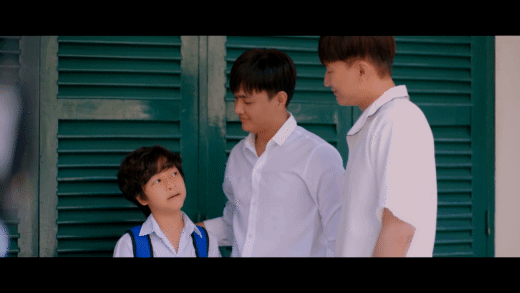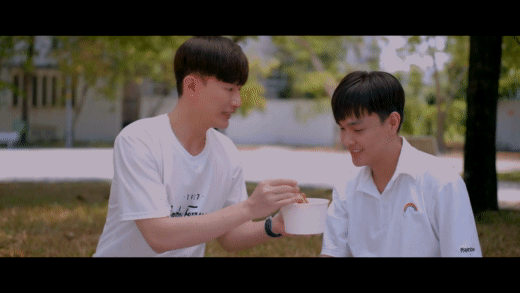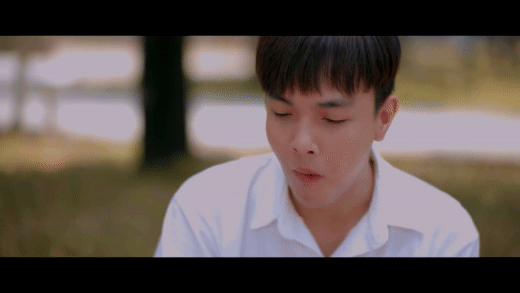#tientai
Text
Sometimes I'll be going about my day normally and then just randomly remember that Tien bromance is an actual series that exists and not just an unhinged feverish dream I had in 2020 and I feel like my brain is going to fucking melt 😭
#tien bromance#this show is so fucking unhinged#fucking crack cocaine on steroids#i got so hyperfixated on it tho#it was like a car wreck and I couldn't look away from the mess#it's so camp#and people just don't seem to know it exists?????#i want more people to feel unhinged about this show#vietbl#vietnamese bl#bl drama#ql drama#sea him#duoc si tien#TienTai
5 notes
·
View notes
Video
20230617 Oumi 7 by Bong Grit
Via Flickr:
写真左外の縁側に赤い絨毯が敷いてあって、その反射光で部屋が真っ赤です。 @Kongorinji temple, Aisho town, Echi district, Shiga pref. (滋賀県愛知郡愛荘町 金剛輪寺)
#Forest#Tree#Trees#Room#Japanese room#Japanese house#Red#Fusuma#Tatami#Japanese sliding door#Tatami mat#Green#Kongorinji#Kongorinji temple#Teintai#Tientai buddhism#Buddhism#Temple#Aisho town#Aisho#Echi district#Echi#Shiga#Oumi#Omi#Japan#Nikon#Nikon D850#AF-S NIKKOR 28mm f/1.8G#flickr
4 notes
·
View notes
Text
There are several different ways to evaluate the claims of any group (like Mormons/Scientologists) about other groups (Christians/Scientists) when claims of affiliation have been made.
It turns out that *whatever method we use*, there never has been any "Japanese Zen", as Japanese Mormon-Christian-Buddhists claim.
How 20th Century Scholars failed to discuss *any of this* is a combination of many factors, not the least of which is love of Japanese culture, which, like the most amazing dodo you've never seen, was in real danger of extinction in the 20th Century. We'll get back to that.
The big deal in this debate though is understanding that people who rely on claims of authority (church says, Jesus says, pope says) are not interested in history, fact, or critical thinking. They are engaged either in proselytization or explaining how an authority looks wrong, but isn't (Religious Apologetics).
Just like Catholics try to explain weird church stuff by "pope says", just like Evangelicals try to explain weird bible stuff by "church says", the ***says*** claim is always going to be BS.
All you have to do to neuter those beleifs is "why are they right without reasons?"
# Defining Terms
The 20th Century's biggest failure was an inability to define terms. I'll give some examples of how we are able to define these terms in the 21st Century, the modern internet age of searchable databases, electronic records, and instantaneous AI translators, but keep in mind NOBODY DID THIS AT ALL in the 20th Century. It became such a problem in Western religious studies programs that other disciplines just abandoned Buddhist Studies as "less than scientific". Check out this infamous quote as an example of that: https://www.reddit.com/r/zen/wiki/buddhism#wiki_academia.3A_.22buddhism.22_not_meaningful.3A
When *other disciplines* tell you that your *entire department* lacks the rigor to even define terms, that's a cultural fail. Buddhist studies is in the middle of an epic failure in the West, as Hakamaya pointed out by simply defining Buddhism.
* **Buddhism: 8FP religions, where 8FP is backed by faith in Causation, Defilement, and Conversion.**
* **Meditation: A religious practice based on faith in Defilement, Authoritative Practice, and promised Attainment.**
* **Zen: Four Statements teachings as interpreted by engagement with the historical record.**
It might seem like these are childishly simple, and that's the point. When we look at the failures of 20th Century scholars *to even attempt definitions*, it's clear that Buddhism in the 1960's, 70's, and 80's was like the 1800's of paleontology: [A total @#$#ing shartshow](https://en.wikipedia.org/wiki/Bone_Wars#Legacy).
# Proving the assertion: Meeting Criteria
X = Y is an assertion, and with these definitions in mind (OR ANY DEFINITIONS) we can turn toward proving assertions. Was any particular "school" of Japanese Buddhism 8FP or 4 Statements of Zen in it's fundamentals?
Easy question to answer. Japanese Buddhism is 8FP all the way.
1. Defilement is a primary element of all Japanese Buddhist groups.
2. Authority is a defining element of Japanese Buddhist traditions.
3. 8FP teachings are present throughout.
# Disproving the assertion: Debunking
But what about the other side? What evidence is there that **Zen is not found in Japan**?
1. History of fraud in Japanese Buddhism:
* Dogen's short life - a history of plaraism and pro-Tientai propaganda marketed as "Zen".
* Hakuin's Secret Manual of Koan "answers" used for political promotions
* The historical and ongoing fealty to Dogen and Hakuin as "defining authorities" of Japanese Buddhism
2. Failure to produce anything like the Zen records of China
* Japanese Buddhist parables are performed rather than arising from constant Zen Public Interview practice
* Communities based on classism rather than socialism; even Alan Watts, the poster boy for 20th Century failures, remarked on how Japanese monastic communities were fundamentally different than Chinese Zen communities.
3. Historical Aborrations in Japanese Buddhist history
* Banning of books, particular *Wumenguan*.
* Dogen's church becoming a funerary business *before* the 20th century
* Public reaction to the leaking of Hakuin's secret manual
# Failure of Representation
We can drill into the incredibly difficult to dispute evidence supporting all of these definitions, assertions, and denials, and indeed any competent academic would... but why *nobody wants to discuss these questions* let alone the evidence in the 20th Century also has to be examined, and it comes down to at least these three:
1. Love of Japan, desperation to see Japan survive WW2.
* Send food or bullets - few people realize Japan almost didn't survive WW2.
* Just as Chinese culture was complete lost after WW2, Japan could have faced a similar fate.
* Anyone who has been to Japan will understand; or just read Lafcadio Hearn
2. Buddhist religious bigotry
* Majority of Western 20th Century Buddhist scholars were affiliated with Japanese religious schools: www.reddit.com/r/zen/wiki/fraudulent_texts
* Buddhism's traditional feud with Zen was ignored/suppressed, like Buddhists never lynched the 2nd Zen Patriarch
* Evangelical Buddhism pushed by Western Academics, which is why we see no basic definitions in the 20th Century Western Academia
3. Anti-Chinese devaluation of Chinese history
* Communist party actively destroyed records and dismantled academia
* Japanese history is full of misappropriation of Chinese history
* Without the Chinese to advocate for Zen records, there was nobody to do it. Until D.T. Suzuki.
The two champions of 20th Century Zen scholarship, D.T. Suzuki and R.H. Blyth, struggled with all three of these problems, along with the lack of Western education in philosophy, history, or comparative religion necessary to be truely scientific.
# No Discussion? No Disagreement
The fact that we don't find ANY evidence of these questions being discussed ANYWHERE in the 20th Century is enough to certify the 20th Century as **a failure to meet any academic standard**. It's important to acknowledge that when religious people refuse to engage in debate at all that their positions are no longer academic. The 20th century Western Buddhist scholarship is less credible than 1800's Paleontology... there weren't any Bone Wars, no competition, and thus no need for critical thinking and argument.
#20 Century fails#Academic vs Religious#Zen#Zen vs Buddhism#Basics#History of Zen in the West#Zen isn't Japanese
0 notes
Text
Autumn Whispers In Tientai Mountains | Autumn Whispers In Ti… | Flickr
Autumn Whispers In Tientai Mountains by Daniel Arrhakis (2023)
With the music : Buddha’s Flute: Tranquil Healing | Music for Meditation & Zen
youtu.be/hc8DQzZj4sE
A Creative dreaming Asian Buddhist fantasy.
View On WordPress
1 note
·
View note
Text








Vietnam tests how much domesticity they can fit into one episode and far exceed my expectations. This might have been a goofy one-off body-swap episode but it was also absolutely adorable, filled with family and love and heart and just so cute it almost hurt.
Thank, Vietnam! Thank you Tien and Tai! I love you all very much.
@absolutebl We got double-Vietnam-domesticity today! We have been blessed.
#Tiến_Bromance#TienTaiTheSeries#Dược_sĩ_Tiến#vietnam bl#vietnambl#vietnam bl gif#vietnambl gif#tientai#asianlgbtqdramas#asian lgbtq dramas#bl drama#bl webdrama#bl series#lgbt family#bl family#boys love#this show warms my heart so much
69 notes
·
View notes
Text
Lost in Saigon
Please come soon or else I’m just going to watch Tien Bromance and Sea Him the Series again and again for the hundredth time (not that its a complaint)

#Lost in Saigon#Sea Him the Series: S2#TienTai#Duoc Si Tien#Huu Tai#LGBTQ+#Romance#Drama#Gay Character#Asian Drama#Vietnam#Web Drama
4 notes
·
View notes
Photo










pham minh huu tien and trei pham, from tien bromance
5 notes
·
View notes
Photo

“Cold Mountain (Han Shan) was a hermit during the Tang Dynasty, who became one of the most revered poets in China. He was a Taoist/Buddhist hermit who begged for food at temples, often sang and drank with cowherds, and became an immortal figure in the history of Chinese literature and Zen. His poems were written twelve-hundred years ago on the rocks, trees, and temple walls of China’s Tientai Mountains”.--Wiki
50 notes
·
View notes
Text
Han Shan - A Bug Crawling in a Bowl
8th century Chinese poet Han Shan's verses are rooted in the quiet nature of the Cold Mountain and the poet's effusive humor that reminds us of the worthlessness of worldly pursuits.
“Years and months flow by like a stream—Another little while and he’ll be an old man.”
– Han Shan
Han Shan was an 8th century recluse and erudite fool who spent most of his life living apart from society in the Tientai Mountains in China, often with his counterparts Shide and Fenggang. Han Shan’s poems are now part of China’s Ch’an (Zen) and Taoist legacy, rooted as they are in the quiet nature…

View On WordPress
2 notes
·
View notes
Photo

— [[BACKGROUND]] of THE DAIMOKU OF THE LOTUS SUTRA — (pt.3 of 3)
.
At the beginning of this letter, the Daishonin calls himself a “follower of the Great Teacher Kompon.” Kompon, meaning fundamental, is another name for the Great Teacher Dengyo. He was the founder of the Japanese Tendai school, which he based on the teachings of T’ien-t’ai of China. He traveled to China to master T’ien-t’ai’s doctrines and, AFTER RETURNING TO JAPAN, REPUDIATED ALL THE SCHOOLS BASED ON THE BUDDHA’S PROVISIONAL TEACHINGS and devoted himself to propagating the Lotus Sutra.
THE PHRASE “FOLLOWER OF THE GREAT TEACHER KOMPON” IMPLIES THAT THE DAISHONIN IS THE LEGITIMATE SUCCESSOR TO THE BUDDHA’S TEACHING CONTAINED IN THE LOTUS SUTRA.
.
Photo: Lake Yamanaka, Yamanashi, Japan 🇯🇵
.
#Buddha #Buddhism #Buddhist #Dhamma #wisdom #Knowledge #awakening #Spiritual #Consciousness #namaste #yogalife #positvevibes #goodvibrations #loveandlight #swan #Love #mountfuji #lakeyamanaka #japan #peace #calm #meditation #meditator #lifeforce #lotussutra #nammyohorengekyo #tientai #blogger #positvevibes #landscapephotography #wow
https://www.instagram.com/p/B9CpsyAhB94/?igshid=13r2rnffk74ug
#buddha#buddhism#buddhist#dhamma#wisdom#knowledge#awakening#spiritual#consciousness#namaste#yogalife#positvevibes#goodvibrations#loveandlight#swan#love#mountfuji#lakeyamanaka#japan#peace#calm#meditation#meditator#lifeforce#lotussutra#nammyohorengekyo#tientai#blogger#landscapephotography#wow
2 notes
·
View notes
Video
20230617 Oumi 6 by Bong Grit
Via Flickr:
金剛輪寺の千体地蔵。これだけ密集したお地蔵様を見るのは初めて。しかも全部に風車。 @Kongorinji temple, Aisho town, Echi district, Shiga pref. (滋賀県愛知郡愛荘町 金剛輪寺)
#Green#Moss#Jizo#Windmill#Pinwheel#Kongorinji#Kongorinji temple#Teintai#Tientai buddhism#Buddhism#Temple#Aisho town#Aisho#Echi district#Echi#Shiga#Oumi#Omi#Japan#Nikon#Nikon D850#AF-S NIKKOR 28mm f/1.8G#flickr
2 notes
·
View notes
Photo






Clambering up the Cold Mountain path
Clambering up the Cold Mountain path,
The Cold Mountain trail goes on and on:
The long gorge choked with scree and boulders,
The wide creek, the mist-blurred grass.
The moss is slippery, though there's been no rain
The pine sings, but there's no wind.
Who can leap the world's ties
And sit with me among the white clouds?
Sitting alone in peace before these cliffs
Sitting alone in peace before these cliffs
the full moon is heaven's beacon
the ten thousand things are all reflections
the moon originally has no light
wide open the spirit of itself is pure
hold fast to the void realize its subtle mystery
look at the moon like this
this moon that is the heart's pivot
You have seen the blossoms among the leaves;
You have seen the blossoms among the leaves;
tell me, how long will they stay?
Today they tremble before the hand that picks them;
tomorrow they wait someone's garden broom.
Wonderful is the bright heart of youth,
but with the years it grows old.
Is the world not like these flowers?
Ruddy faces, how can they last?
(Cold Mountain/Han Shan)
Cold Mountain (Han Shan, 8-9th century CE) is one of the most revered poets in China. He was a Taoist/Buddhist hermit who begged for food at temples, often sang and drank with cowherds, and became an immortal figure in the history of Chinese literature and Zen. His poems were written twelve-hundred years ago on the rocks, trees, and temple walls of China’s Tientai Mountains.
https://www.drbu.edu/blog/poem-cold-mountain
https://www.poetryintranslation.com/PITBR/Chinese/HanShan.php
https://www.poetry-chaikhana.com/Poets/H/HanshanColdM/index.html
https://www.coppercanyonpress.org/books/the-collected-songs-of-cold-mountain-by-han-shan-cold-mountain-tr-bill-porter-red-pine/
1 note
·
View note
Link
“Thirty spokes converge on a hub
but it’s the emptiness
that makes a wheel work
pots are fashioned from clay
but it’s the hollow
that makes a pot work
windows and doors are carved for a house
but it’s the spaces
that make a house work
existence makes a thing useful
but nonexistence makes it work”
-Lao-tzu-
(Taoteching, verse 11, translation by Red Pine)
HSUAN-TSUNG says, “Thirty spokes converging on a hub demonstrates that less is the ancestor of more.”
HO-SHANG KUNG says, “Ancient carts had thirty spokes in imitation of the lunar number.”
LI JUNG says, “It’s because the hub is empty that spokes converge on it. Likewise, it’s because the minds of sages are empty that the people turn to them for help.”
CH’ENG HSUAN-YING says, “A cart, a pot, and a house can hold things because they are empty. How much more those who empty their mind.”
WU CH’ENG says, “All of these things are useful. But without an empty place for an axle, a cart can’t move. Without a hollow place in the middle, a pot can’t hold things. Without spaces for doors and windows, a room can’t admit people or light. But these three examples are only metaphors. What keeps our body alive is the existence of breath within us. And it is our empty, nonexistent mind that produces breath.”
SUNG CH’ANG-HSING says, “In this verse the great Sage teaches us to understand the source by using what we find at hand. Doors refer to a person’s mouth and nose. Windows refer to their ears and eyes.”
CHANG TAO-LING says, “When ordinary people see these things, they only think about how they might employ them for their own advantage. When sages see them, they see in them the Tao and are careful in their use.”
TE-CH’ING says, “Heaven and Earth have form, and everyone knows that Heaven and Earth are useful. But they don’t know that their usefulness depends on the emptiness of the great Way. Likewise, we all have form and think ourselves useful but remain unaware that our usefulness depends on our empty, shapeless mind. Thus, existence may have its uses, but real usefulness depends on nonexistence. Nonexistence, though, doesn’t work by itself. It needs the help of existence.”
And, RED PINE adds, “Lao-tzu’s ‘existence’ and ‘nonexistence’ are tantamount to yang and yin…Until recently, the people who lived in the middle reaches of the Yellow River watershed, where the Taoteching was composed, carved their houses out of the loess hillsides. As long as the ceilings of the rooms were carved in an arch, the compactness of the soil made support beams unnecessary. Thus, the only building materials needed were for doors and windows.”
–
Yesterday, we talked about emptying our minds. With today’s verse, Lao-tzu returns to talking about the importance of emptiness. It’s the emptiness that makes a wheel work, it’s the hollow inside a pot that makes a pot work, it’s the spaces for windows and doors that make a house work.
That emptiness, that we can’t really see, that we hardly pay any attention to at all – without it, everything that exists wouldn’t be useful to us, at all. Emptiness, nonexistence, is what makes it work for us.
When I first encountered this verse in the Taoteching, it was something of an epiphany for me. I had never before really considered the value of “nothing.” Instead, “something” was what always had my attention.
My mind was always thinking about something. I was always working on something. But I never, for even a moment, considered any purpose for empty space. Since my “epiphany,” I have taken to looking at things quite differently. I think about nothing, and work with nothing, like never before.
I started really paying attention to that empty space which “fills” the skies. Before, when I looked up into the skies, all that empty space seemed such a waste. Now, I see it as full of purpose. Likewise, all the emptiness in every cell of matter. Down to the empty space inside atoms. There is so much more empty space, so much more nothing, than there is something. And that something couldn’t work without it.
I no longer see emptiness as lack, or like it is in want (of something). I rejoice in the emptiness inside of me, rather than trying to fill it. I have everything I need.
–
Red Pine introduces the following sages with today’s verse:
CH’ENG HSUAN-YING (FL. 647-663). Taoist master and proponent of using an eclectic approach to explain the teachings of Lao-tzu. His commentary was recently reedited from portions found in the Taoist canon and in the Tunhuang Caves: S.2517. It reflects the influence of Chuang-tzu along with Buddhist Sanlun and Tientai teachings and was required reading for Taoists seeking ordination during the T’ang dynasty. Lao-tzu-shu.
CHANG TAO-LING (A.D. 34-157). Patriarch of the Way of Celestial Masters, the earliest known Taoist movement, which emphasized physical and moral training along with spiritual cultivation. His commentary was lost until a partial copy, including verses 3 through 37, was found in the Tunhuang Caves: S.6825. Lao-tzu hsiang-erh-chu.
2 notes
·
View notes
Text





Vietnam does domesticity so, so well in their BLs, okay? They're so cute and so tiny and somehow Tien makes threatening to kidnap her family members a second time still be adorable. It's a real talent. They're just such an adorable, tiny, happy little couple with their son trying to live their best life. I want more of this. Please, BL, please give me more tiny families.

I do love that they ended up saving her purse instead of kidnapping family members, though. That's real growth for Tien!
#Dược sĩ Tiến#tien bromance#tientai the series#tientai#boy's love gif#bl gif#boys love gif#tiny family#v-bl#vietnam bl#vietnamese bl#vietnam bl gif#vietnamese bl gif#v-bl gif#tientai gif#Dược_sĩ_Tiến gif#Dược sĩ Tiến gif#i love them so much#tiny gay family#domesticity#adorable gay domesticity
25 notes
·
View notes
Text
Tien Bromance on Netflix
Congratulations to Tien and Tai, fantastic news for them and the whole production. In will air on 2021.09.09 in some Asian countries so enjoy.
Now just waiting for Sea Him the Series 2 which Mr. Tai is writing himself.
More TienTai Content
**I’ll be spamming Tien Bromance, each episode today cause it deserves that.

#vDrama#Tien Bromance#Tai-Tien#LGBTQ+#Romance#Violence#Action#Gay Characters#Thriller#Asian Drama#Vietnam#Drama
4 notes
·
View notes
Text
Lo Zen ed il suo Golem Accademico
Quanto sto per scrivere finirà sotto gli occhi di varie tipologie di lettori e raccoglie, cita e commenta quanto può aiutare a far comprendere la battaglia inevitabile fra mondo accademico e zen.
Il naufragio è già insito nell’articolo, come anche lo è nell’indagine scientifica tout court, e non solo negli studi orientalistici. Una mente normalmente reificante (che rende “cose” anche la percezione che precede le cose) crede che esistano qualcosa come le “astrazioni”, che tuttavia appartengono così al solo pensamento illuministico; di converso la “metafisica” inerisce al sentire ed al volere, eppure richiede da questi, anzi da noi, un silenzio che possa continuarsi anche durante lo studio.
Sarei banale qualora dicessi che se ciò non succede finiamo per immaginarci quello che più ci aggrada, anche se ci appare oggettivo perché lo esprimiamo con formule?
Probabilmente, se riusciamo invece a “metterci nei panni” di quel qualcuno o qualcosa che stiamo cercando di capire, ne riceviamo una rivelazione vasta, forse imponderabile anch’essa ma capace di prendere la forma di molte scoperte, che si susseguono nel tempo durata.
Questo sarebbe il nodo gordiano, un nodo peraltro capace di sciogliersi da sé come fosse un serpente attorcigliato.
Certo, per Mozart era più facile far diventare una composizione, da lui percepita come sferica, qualcosa di ripetibile su di una tastiera; per quanto riguarda lo zen, invece, si deve per forza ascoltare tutti questi vecchi monaci che, ogni volta, dovevano rispondere a situazioni sempre differenti, sapendo muoversi come quelle vecchie volpi che erano. Tutti, nessuno escluso.
Perfino Huineng che, agli occhi degli esperti, pare somigliare di più ai maestri giapponesi, talvolta nel “suo” Sutra dell’Altare, ci spiffera qualche trucchetto.
“Ogni volta che vi viene posta una domanda, rispondete negativamente se è affermativa, e viceversa. Se vi si chiede di un uomo comune, a chi pone la domanda dite qualcosa su un saggio, e viceversa. La dottrina del “Mezzo” può essere afferrata mediante la correlazione o l’interdipendenza dei due opposti. Se a tutte le altre domande si risponderà alla stessa maniera, non sarete molto lontani dalla verità”.
Ecco la triplice realtà data dai tre livelli di interazione possibile con lo zen: lo studio della storia, la comprensione filosofica, l’esperienza iniziatica attiva.
Nella mia esperienza resta il problema di riuscire a sopportare – lo ammetto - qualcuno che voglia spiegarmi di cosa si tratti avendo in mente cose inventate come principi, idee, valori e aspettative, dato che lo zen, sia in Cina che altrove, non è mai somigliato nemmeno a se stesso, come non è mai stato quello che ci siamo immaginati facendolo somigliare per forza a noi stessi.
Cito un brano di questo studio di Van der Braak: “The traditional Zen narrative views enlightenment as “a direct, unmediated experience of reality beyond the realm of conditioning, which does not require intercession through the conventional use of objects of worship, such as images, symbols, or representations of deities.” Such a notion of a “pure” Zen, which privileges enlightenment as an unmediated experience of reality, has been contested by modern scholarship. Historical and cultural criticism points out the importance of speech and mediation throughout the historical Chan tradition, which “makes traditional claims for the priority of iconoclasm seem like little more than idle rhetorical flourishes”.
Traduco: “Lo zen viene tradizionalmente ricondotto ad una idea di illuminazione come fosse "un'esperienza diretta e non mediata della realtà che sta oltre il regno del condizionamento, che non richiede l'intercessione attraverso l'uso convenzionale di oggetti di culto come immagini, simboli o rappresentazioni di divinità". Tale nozione purista di zen, che privilegia l'illuminazione come esperienza non-mediata della realtà, è stata contestata dagli studiosi contemporanei. Tali critiche storiche e culturali sottolineano l'importanza del discorso e della mediazione in tutta la tradizione storica di Chan, importanza la quale renderebbe (cita) “le usuali affermazioni sulla priorità dell'iconoclastia (nello zen) somigliare ad oziosi ghirigori retorici"".
Cito questo brano per parlare di una confusione radicale che è della mente umana, alla quale mente lo zen propone un eterno rebus che è perfino storico, oltre che vivente in ognuno che se ne sobbarchi l’ascesi.
Ecco la bailamme accademica; sono nati dei “partiti” su ogni cosa che dello zen sia mai stata detta.
Raramente viene colto lo zen (chan-thein-son-zen) come una fucina di mezzi abili, ed è strano che nessuno se ne accorga dato che l’immediatismo zen e quindi la sua non-configurazione sempre cangiante avrebbe potuto metterci tutti sulla buona strada.
La non-configurazione dello zen non lo toglie dal buddhismo ma, anzi, ne fa essere l’estrema espressione, data l’importanza del metodo-upaya che è nel buddhismo tutto. Ma è che tale importanza non può essere rilevata in pieno da chi pensa la religione come “fede”.
Quando l’eredità del buddhismo universitario indiano scivolerà in Cina nel tientai e poi nel tendai, in Giappone, lo zen aveva mostrato questa caleidoscopica capacità, che ha fatto esplodere diventandone la variabile onnipresente: presente all’interno della scuola hwa yen, della lankavatara, del tendai stesso (zen del nord o testa di bue), del vajrayana (oramai è conclamato) perfino di quello bonpo (A-tri), e rimanendo contaminato dalle stesse scuole a cui possiamo aggiungere senza tema di smentita, la scuola della pura terra; a Taiwan sono indistricabili.
Niente meno.
Certo è che lo zen, storicamente, non ha niente a che vedere col cristianesimo, con la politica o con la scienza né col beat o lo square zen, che sono contestualmente allo zen tutte risposte dettate da bisogni personali, o categorie definenti le nostre umane esperienze.
Personalmente trovo che lo zen – come dissi ad un amico accademico – sia come l’erba cattiva delle religioni.
“Adding to the hermeneutic challenge for Chan/Zen studies is the fact that the Chinese Chan tradition has come to theWest through the mediation of Japanese Zen orthodoxy (especially Rinzai), as embodied for example in the famous Japanese researcher Yanagida. This effective history [Wirkungsgeschichte] of the Chinese Chan writings inthe Japanese Rinzai tradition has co-determined the establishment of a modern Zen orthodoxy in the West. As various researchers have stressed, it is time now to differentiate between the modern orthodox interpretation of Chan (through the filter of the Japanese Rinzai school of Zen) and the historical orthodox forms of Chan (as embodied in the original writings of the Chan masters and their effective history in Tang and Song China). Such a differentiation between these two orthodoxies is made possible by a host of new research on Chan”.
Traduco: “Da aggiungere alla sfida ermeneutica inerente gli studi Chan/Zen è il fatto che la tradizione cinese Chan è arrivata in Occidente attraverso la mediazione dell'ortodossia Zen giapponese (in particolare quella Rinzai), incarnata, come fu, ad esempio nel famoso ricercatore giapponese Yanagida. Questa storia efficace [Wirkungsgeschichte] degli scritti del Chan cinese nella tradizione giapponese Rinzai ha co-determinato l'istituzione di una moderna ortodossia Zen in Occidente. Come hanno sottolineato vari ricercatori, è giunto il momento di distinguere tra la moderna interpretazione ortodossa del Chan (attraverso il filtro della scuola giapponese Zen Rinzai) e – al contrario - le forme storiche ortodosse del Chan (come sono preservate negli scritti originali dei maestri Chan e la loro storia nei periodi Tang e Song in Cina). Una tale differenziazione tra queste due ortodossie è resa possibile da una serie di nuove ricerche sul Chan”.
Sarà.
Leo Reiyo
André Van der Braak: Toward a Philosophy of Chan Enlightenment: Linji’s anti-enlightenment rhetoric toward a philosophy of chan Enlightenment.
0 notes